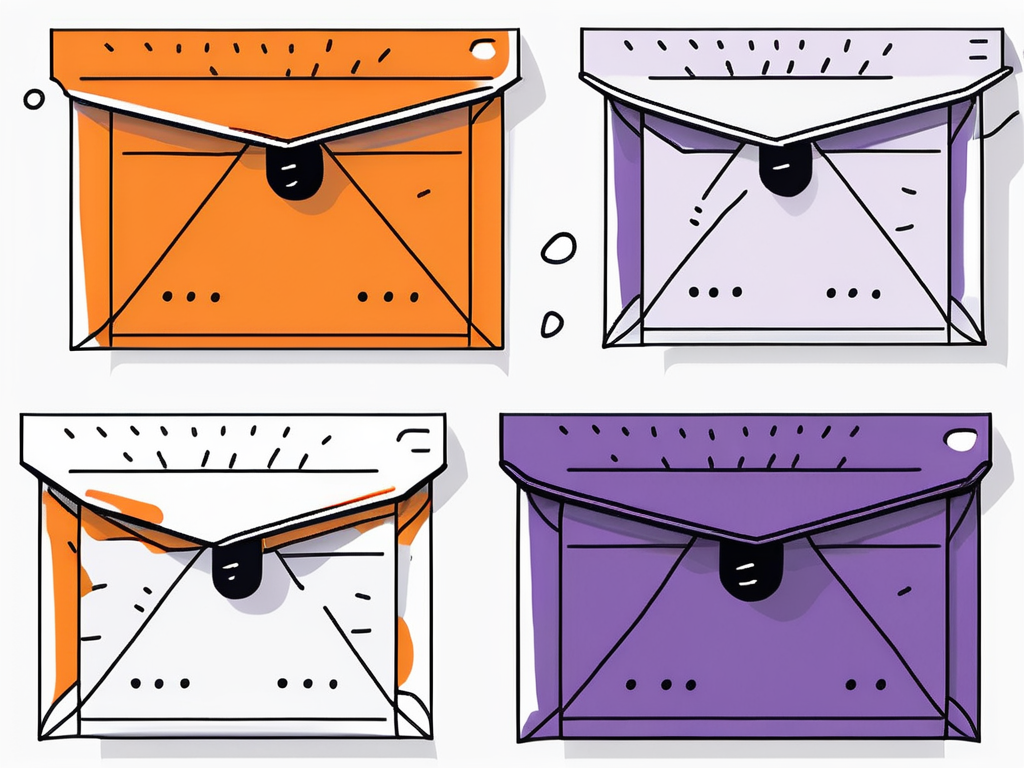Is a Bubble Mailer Considered a Flat? Unpacking the Main Differences

When it comes to shipping items through the postal service, understanding the classifications of different mail types is crucial for both cost-efficiency and ensuring your packages arrive safely. One common question that often arises is whether a bubble mailer can be considered a flat.
Bubble mailers, known for their lightweight yet protective qualities, are a popular choice for sending a variety of items. But can bubble mailers be considered flats?
In this article, we will explore the defining characteristics of flats, examine where bubble mailers fit in, and provide you with the necessary information to make informed shipping decisions.
Key Differences Between Bubble Mailers and Flats
While both bubble mailers and flats serve the purpose of shipping items through mail services, there are several key differences that set them apart. Let’s explore these differences in more detail.

When considering the environmental impact, it’s worth noting that bubble mailers are often seen as less eco-friendly compared to flats. Businesses looking for sustainable packaging and fulfillment solutions can explore eco-friendly alternatives that align with their commitment to reducing plastic waste.
The bubble wrap lining in bubble mailers is not easily recyclable and can contribute to plastic waste. Flats, on the other hand, can be made from recyclable materials like cardboard or paper, making them a more sustainable packaging choice for environmentally conscious shippers.
Size and Weight Considerations
- Bubble mailers come in various sizes, ranging from small enough to hold a single CD to large enough to fit a small laptop.
- In contrast, flats can be significantly larger, with dimensions reaching up to 12 inches by15 inches. Additionally, bubble mailers tend to be lighter due to their flexible nature, whereas flats can vary in weight depending on their contents.
Moreover, the size and weight of the packaging can impact shipping costs. Carriers often charge based on dimensional weight, which takes into account the size of the package in addition to its weight. This means that choosing between a bubble mailer and a flat can have cost implications depending on the size and weight of the item being shipped.
Material and Durability Differences
- Flats are typically made from sturdier materials such as cardboard, stiff paper, or lightweight plastic. They are designed to withstand the rigors of postal handling and protect the contents within.
- On the other hand, bubble mailers are made from a combination of strong polyethylene or kraft paper, providing a balance between strength and flexibility.
It’s important to consider the fragility of the items being shipped when selecting between a bubble mailer and a flat. While bubble mailers offer cushioning and protection against minor impacts, flats may be more suitable for items that require rigid support to prevent bending or damage during transit.
What is a Flat in Postal Terms?
In postal terms, a “flat” refers to a type of mail piece that exceeds the dimensions of a regular letter or standard envelope. Flats are typically larger, flatter items such as:
- magazines
- catalogs
- unfolded newspapers
- large documents
These items can be flexible or rigid, but they cannot contain any 3D objects or thick enclosures.
When it comes to mailing flats, it’s important to ensure that the contents are properly secured within the packaging to prevent shifting during transit.
Using rigid flat mailers or cardboard inserts can help maintain the integrity of the items and prevent bending or damage. Additionally, including clear addressing and proper postage on flat mail pieces is essential for efficient delivery through the postal system.
Postal Charges for Bubble Mailers and Flats
When it comes to postal charges, the packaging you choose will have an impact on shipping costs. Let’s take a closer look at the pricing structure for both bubble mailers and flats.

Understanding the intricacies of postal charges can help you make informed decisions when shipping your items. Check out our guide on how to reduce shipping costs for eCommerce businesses to maximize efficiency and save money.
Pricing Structure for Bubble Mailers
- Since bubble mailers are considered packages rather than flats, they fall under a different pricing category.
- Postal services typically charge based on the weight anddimensions of the mail piece, along with the destination and delivery speed.
It’s important to consider these factors when estimating the shipping costs for your bubble mailer.
Additionally, the thickness of the bubble mailer can also impact the postage cost. Thicker bubble mailers may be classified differently and could result in higher shipping fees. It’s advisable to choose the appropriate size and thickness of the bubble mailer to ensure cost-effective shipping.
Cost Implications for Flats
Flats, on the other hand, have their own pricing structure. Postal services often distinguish between “machinable” and “non-machinable” flats. Machinable flats are generally less expensive to ship, as they meet specific criteria for automated order processing.
Non-machinable flats, such as those with rigid contents or irregular shapes, may incur additional fees. It’s essential to adhere to the guidelines provided by the postal service to avoid unexpected costs.
Moreover, the material of the flat can also affect the shipping charges. For instance, flats made of lightweight paper may qualify for lower postage rates compared to flats made of heavier materials. Understanding the composition of your flat can help you anticipate and manage your shipping expenses effectively.
Choosing the Right Packaging for Your Needs
Now that we’ve explored the differences between bubble mailers and flats, let’s discuss when it’s best to use each type of packaging.
When it comes to selecting the appropriate packaging. Understanding the intricacies of postal charges can help you make informed decisions when shipping your items. ensure cost-effective and damage-free shipping. Understanding the strengths and limitations of different packaging options can help ensure that your items arrive at their destination safely and securely.
When to Use Bubble Mailers
Bubble mailers are an excellent choice when you need to protect delicate or breakable items during shipping. They provide a cushioning barrier against bumps and vibrations, minimizing the risk of damage. If you’re sending small, lightweight items that require extra protection, a bubble mailer is the way to go.
Additionally, bubble mailers are ideal for items that need to be kept confidential or protected from prying eyes. The opaque exterior of bubble mailers ensures that the contents remain hidden during transit, adding an extra layer of security to your shipments.
When to Opt for Flats
Flats are more suitable when shipping larger, thinner items that do not need the same level of cushioning as fragile objects. If you’re sending documents, unfolded newspapers, or flat merchandise, opting for a flat can be a cost-effective choice. However, it’s important to ensure your flat meets the criteria outlined by the postal service to avoid any potential issues.
Moreover, flats are often preferred for their versatility and eco-friendly nature. These packaging options are typically made from recyclable materials, making them a sustainable choice for businesses looking to reduce their environmental impact.
By choosing flats for certain shipments, you can demonstrate your commitment to sustainability while still meeting your shipping needs effectively.
Impact of Packaging Choices on Delivery
Aside from the cost and protection considerations, your packaging choice can also have an impact on the delivery experience. Let’s explore a couple of key factors to consider.
When it comes to choosing the right packaging for your shipments, there are several nuances that can influence the delivery process. Understanding these nuances can help streamline your shipping operations and enhance customer satisfaction.
Speed and Efficiency of Delivery
- Bubble mailers, due to their smaller size and overall packaging design, are often processed more quickly and efficiently by postal services. For businesses shipping small and lightweight items, eCommerce fulfillment services can streamline packaging and reduce shipping costs.
- Flats, especially non-machinable ones, may require additional manual handling and sorting, which can result in slightly longer delivery times. Learn about best practices for shipping small and lightweight products to avoid delays and unexpected fees.
It’s essential to factor in the urgency of your shipment when deciding which packaging option to use.
Moreover, the size and weight of your packaging can also impact the shipping cost. Lighter and more compact packages like bubble mailers may qualify for lower shipping rates, saving you money in the long run.
Safety and Security Considerations
Both bubble mailers and flats provide a level of security for the contents within. However, bubble mailers offer increased protection against impact and compression forces, reducing the likelihood of damage during transit. If your priority is ensuring your items arrive intact, bubble mailers are the safer choice.
Additionally, considering the environmental impact of your packaging choices is becoming increasingly important. Opting for recyclable or biodegradable materials, such as eco-friendly bubble mailers, can not only protect your items but also demonstrate your commitment to sustainability to your customers.
Decoding the Mail Classifications: Is a Bubble Mailer a Flat or Not?
So, is a bubble mailer considered a flat in the world of postal packaging? The answer is no.
Bubble mailers and flats are distinct packaging options, each with its own advantages and use cases. Whether you opt for a bubble mailer or a flat depends on the nature of your items, shipping costs, and delivery requirements. By understanding these differences, you can make an informed decision that ensures your packages arrive safely and securely at their destination. For businesses looking to streamline their shipping process, Fulfyld provides efficient fulfillment solutions tailored to your needs.